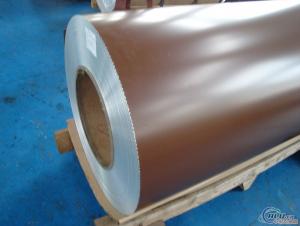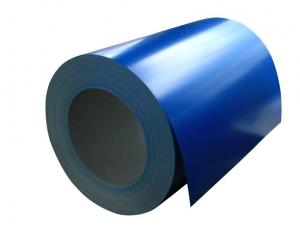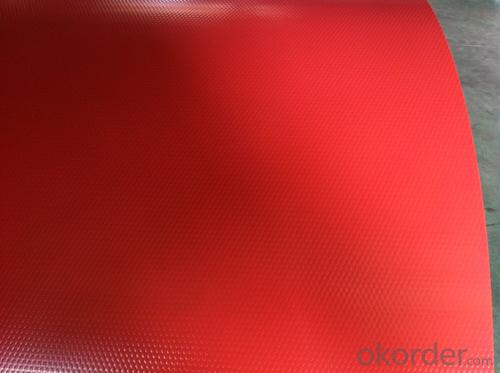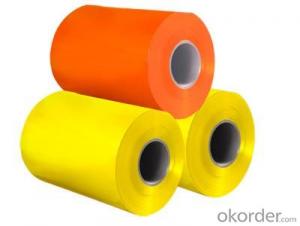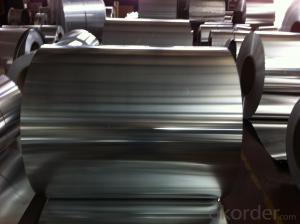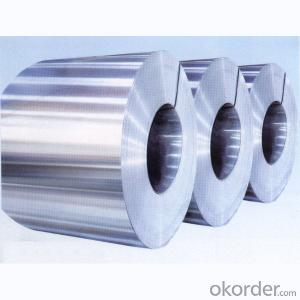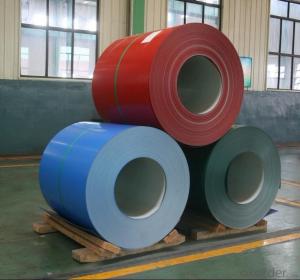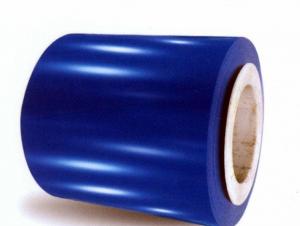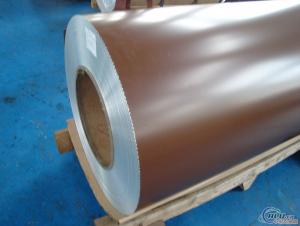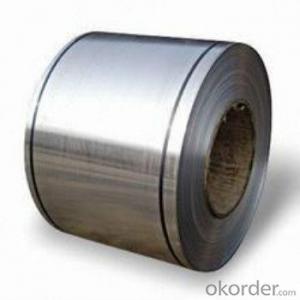Ruud Aluminum Coils Price - PE Coated Aluminium Coils RAL9010 AA3003 H14
- Loading Port:
- China main port
- Payment Terms:
- TT or LC
- Min Order Qty:
- 5 m.t.
- Supply Capability:
- 5000 m.t./month
OKorder Service Pledge
OKorder Financial Service
You Might Also Like
Structure of Product Description
PE Coated aluminium coils are widly used in decoration field. For the painting, it depends on the using evironment. If you use in the open air, we recommend the PVDF coated aluminium coils. This kind of painting can last 15-20 years. If you use in the room, we recommend PE coated aluminium coils. The price is much more competitive.
Main features of the product
a.Competitive price---We have our own mills and can produce mill finished aluminium coils, so we can control the production cost better.
b.Professional after-sale service---We have more than 15 years exportation experience and you need not worry about the exporation problems.
c.Fast delivery time---We can control the delivery time within 35 days.Image
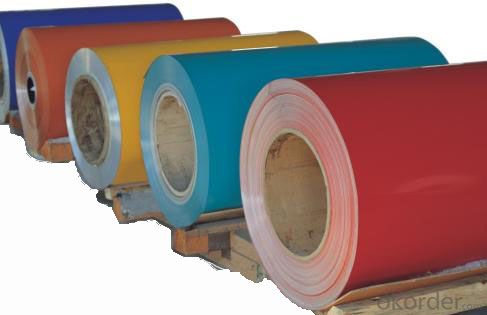
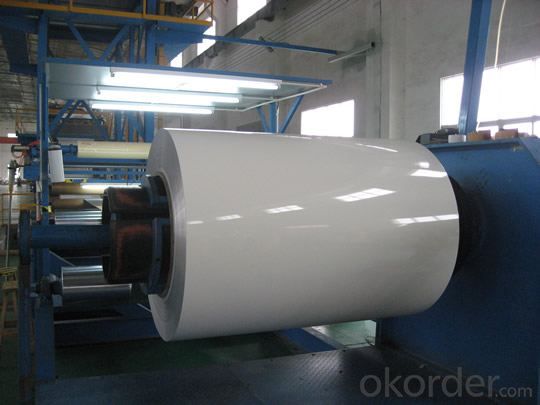

Product Specification
Alloy Temper Painting Coating Thickness Coil ID AA3003 H14 PE 22-25 MICORN 505MM
5. FAQ
What is the quality standard?
---Usually our standard is GB3880-2006
What is the largest width?
---It is 2300mm
What is the MOQ?
---Usually we can accept 80 tons.
| Polyester coated aluminum foil coil | |||||
| Item | Technical requirement | Item | Technical requirement | Color | Specification |
| Thickness of coating film | ≥16μm | Boiling water resistance | Make no difference within 2 hours | 0.10×1240-0.60×1240 | |
| Glossiness deviation | When glossiness< 70, the tolerance ≤10 When glossiness ≥70, the tolerance ≤ 5 | Color difference | △E≤3.0 | ||
| Pencil hardness | ≥HB | ||||
| Adhesive force | ≥ grade 1 | ||||
| Flexibility (T) | ≤3 | ||||
- Q: Can aluminum coils be used in the manufacturing of appliances?
- Yes, aluminum coils can be used in the manufacturing of appliances. Aluminum coils offer several advantages such as being lightweight, corrosion-resistant, and having good thermal conductivity, making them suitable for various appliance applications including refrigerators, air conditioners, and heating systems.
- Q: Can aluminum coils be used in automotive body panels?
- Yes, aluminum coils can be used in automotive body panels. Aluminum is a lightweight and corrosion-resistant material, making it an ideal choice for automotive applications. The use of aluminum coils in body panels offers several advantages, including improved fuel efficiency due to the reduced weight of the vehicle, better handling and maneuverability, and enhanced durability. Additionally, aluminum is highly recyclable, making it an environmentally friendly option for automotive manufacturing. Many automakers have already started incorporating aluminum coils in their vehicles, and this trend is expected to continue as the industry strives for lighter and more sustainable vehicles.
- Q: What are the best rust-proof coils? Please tell me the model and manufacturer in Shangdong. Thank you.
- 3003 aluminum coil, AL-Mn series alloy, is the most widely used rust-proof aluminum with the density being 2.73. It is applicable to insulation projects such as pipe insulation, packaging, machine parts, refrigerator, air conditioning and ventilation pipes and other wet environment.
- Q: What is the hardness of aluminum coils?
- The hardness of aluminum coils can vary depending on a few factors such as the specific alloy used and the tempering process applied. Generally, aluminum coils have a relatively low hardness compared to other metals. Aluminum is known for its lightweight and malleable properties, making it easy to bend and shape. However, through various heat treatment processes like annealing or cold working, the hardness of aluminum coils can be increased to meet specific requirements. It is important to note that the hardness of aluminum coils may also vary depending on the intended application and the desired level of strength and durability.
- Q: Can the displacement sensor be used for real-time measurement of the aluminum coil thickness?
- Yes, you can use two sensors to measure thickness, either contact sensor or laser sensor
- Q: How is an aluminum coil made?
- An aluminum coil is made through a process called continuous casting and rolling. First, pure molten aluminum is poured into a continuous casting machine, which creates a solidified strip of aluminum. This strip is then fed through a series of rolling mills, where it undergoes multiple passes to achieve the desired thickness and shape. The rolling process also helps in improving the mechanical properties of the aluminum coil. Finally, the coil is coiled up and is ready to be used for various applications such as in construction, automotive, or packaging industries.
- Q: What is the typical lifespan of an aluminum coil?
- Factors such as usage, maintenance, and environmental conditions can cause the typical lifespan of an aluminum coil to vary. However, if an aluminum coil is properly cared for and regularly maintained, it can last for 20 to 30 years or even longer. It is possible to extend this lifespan by keeping the coil clean, ensuring proper ventilation to prevent moisture buildup, and promptly addressing any damages or issues. Moreover, the lifespan of an aluminum coil can also be affected by exposure to harsh weather conditions, chemicals, or corrosive environments. Therefore, it is important to seek guidance from manufacturers or industry professionals to obtain specific information about the expected lifespan of a particular aluminum coil in various applications.
- Q: Are aluminum coils suitable for aerospace applications?
- Yes, aluminum coils are suitable for aerospace applications. Aluminum is known for its lightweight yet strong properties, making it an ideal material for aerospace components. It offers excellent corrosion resistance, high thermal conductivity, and good electrical conductivity, all of which are crucial in aerospace engineering. Additionally, aluminum coils can be easily formed and fabricated, making them versatile for various aerospace applications, such as structural components, aircraft frames, and heat exchangers.
- Q: i am thnking of building my own aluminum john boat and using the propulsion from a jetski to power it, i was wondering if anyone had taken on a project like this and had a few pieces of advice to offer while i am still in the planning stages. the biggest concern i have right now involves the tunnel for the intake, should i use the original fiberglass from the jetski or build up a tunnel out of aluminum for it?
- 518 okorder /
- Q: Calculate the specific heat of aluminum (in calories).mass of aluminum25.0 gmass of water23.2ginitial temperature of aluminum98.0Cinitial temperature of water20.0Cfinal temperature of water33.0Cround to three decimal places, do not include units.
- Heat gained by water = heat lost by aluminum Heat = H mass = m specific heat =c change in temperature = dT H = mcdT mcdT for water = mcdT for Al (23.2)(1.00)(13) = (25.0)(c(Al))(33-98) c(Al) = (23.2)(1.00)(13)/(25.0)(65) = 0.186 This value is just a bit below the known value of specific heat for aluminum, where c = 0.217 cal/g.C
Send your message to us
Ruud Aluminum Coils Price - PE Coated Aluminium Coils RAL9010 AA3003 H14
- Loading Port:
- China main port
- Payment Terms:
- TT or LC
- Min Order Qty:
- 5 m.t.
- Supply Capability:
- 5000 m.t./month
OKorder Service Pledge
OKorder Financial Service
Similar products
Hot products
Hot Searches
Related keywords

